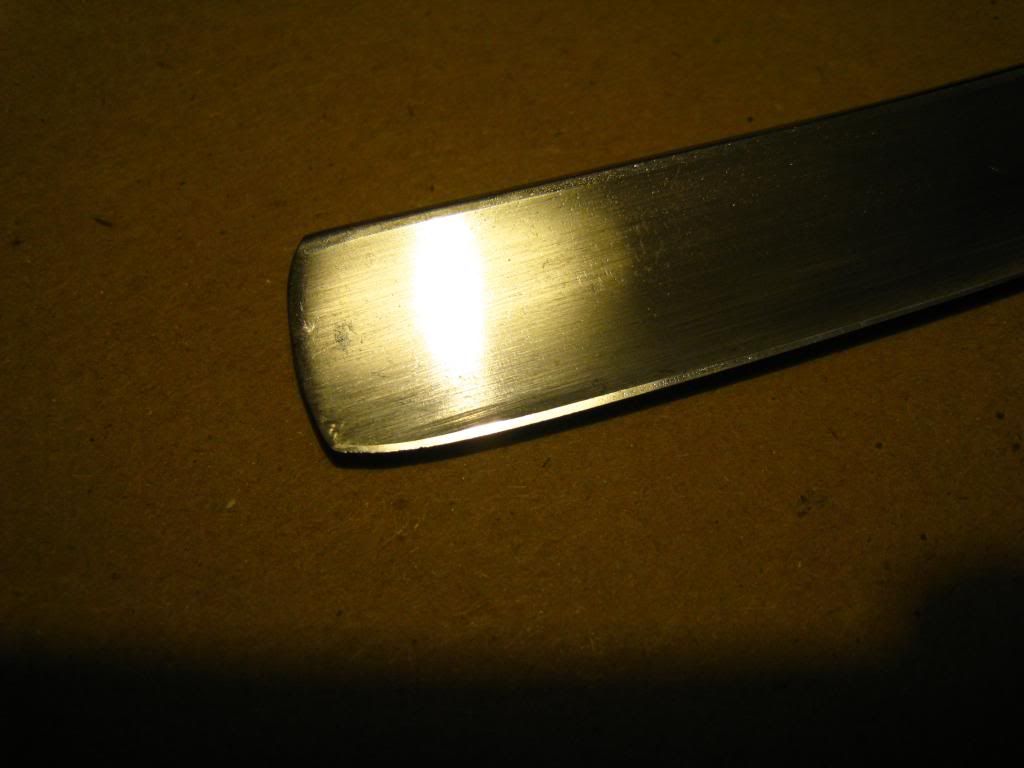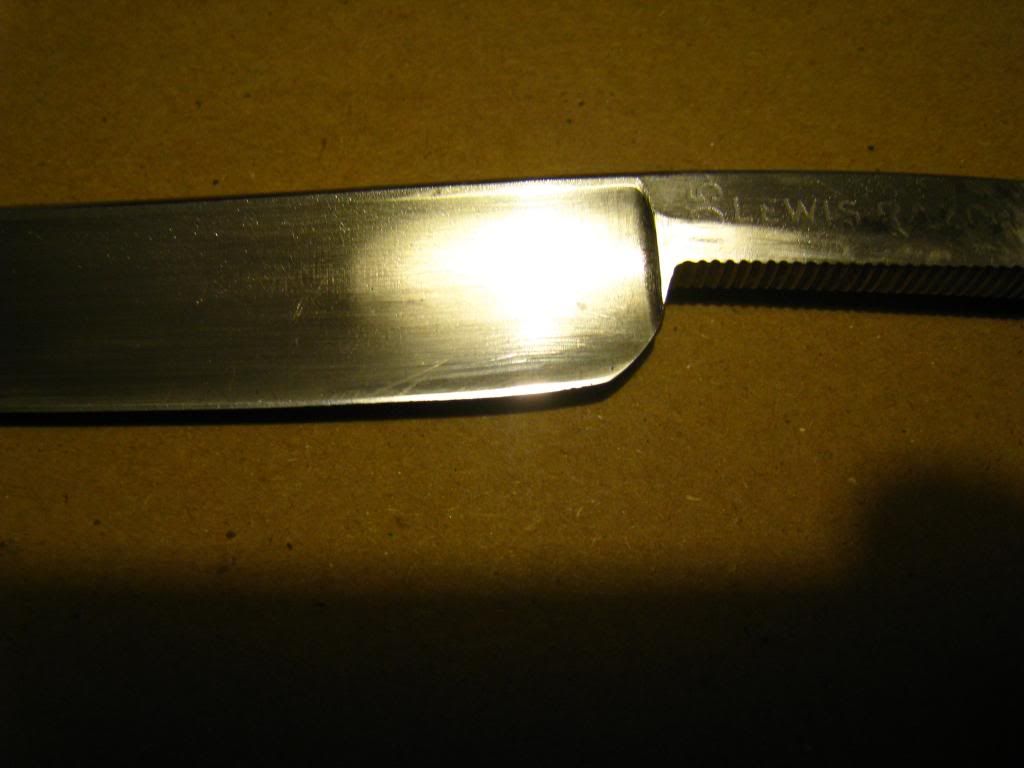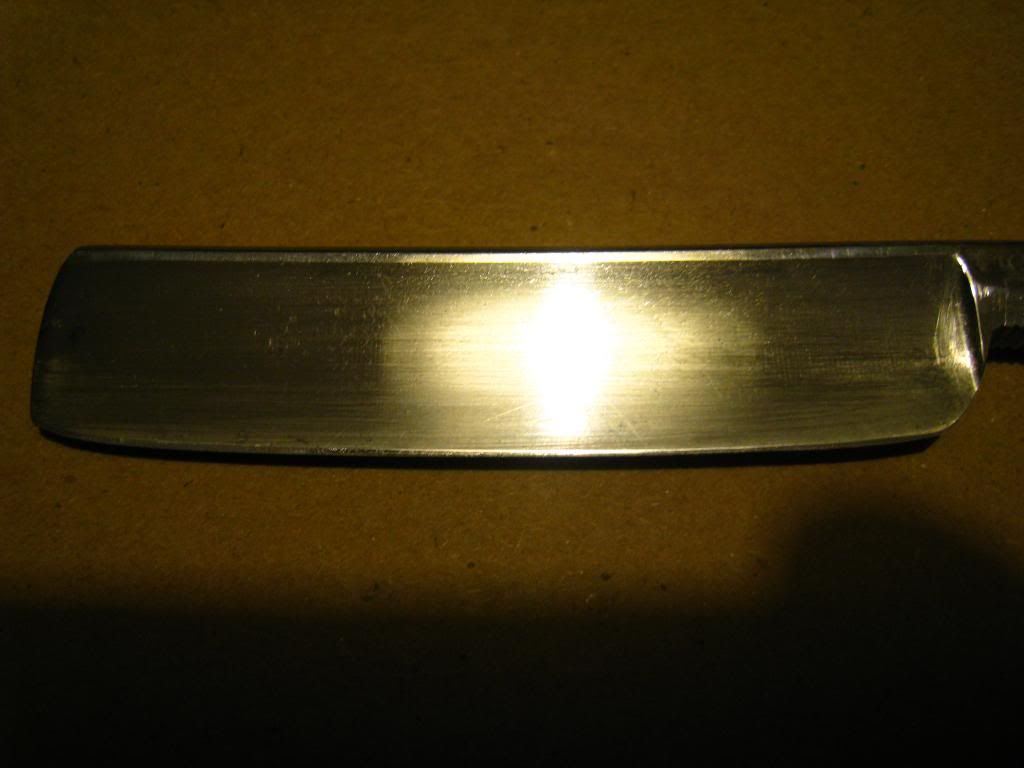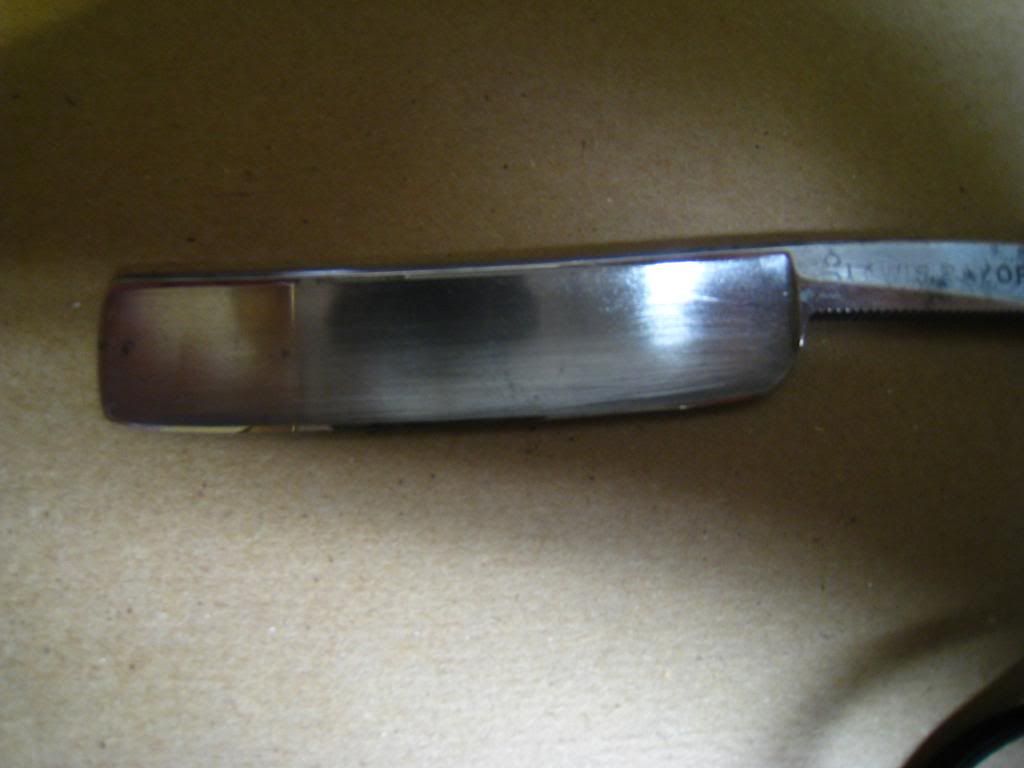Results 1 to 10 of 20
-
12-03-2013, 06:26 PM #1Member

- Join Date
- Apr 2010
- Posts
- 87
Thanked: 0 I keep getting chips from honing. Please help.
I keep getting chips from honing. Please help.
I bought a vintage blade on ebay with some small chips. It took me a while to get most of the chips out using my low grit DMT coarse stone. I then moved to 1200 grit Bester, King 4k, Naniwa 8k, and Naniwa 12k.
I seems like the chips go away but the blade is not sharp enough. I keep honing trying to get it sharper. It eventually then chips again before it becomes sharp enough to shave. The parts of the blade that don't have chips are shave ready.
-
12-03-2013, 06:45 PM #2

As to the chips, what stone causes the chips? If it's on the 1200, then use the 4K to reset the bevel. I've never used a 4K King but if it's anything like the King 1K it will be a slow stone and will benefit from a good slurry to speed it a little. Some blades just don't seem to like low grit ceramics so perhaps that is the problem.
As to sharp, remember that sharp comes from the bevel while the rest of the progression is smoothing, refining, polishing. In a very real sense it will be as sharp as it's ever going to be coming off the 1K or whatever we use to set the bevel. We can use any stone for this purpose but prefer a coarser stone in order to get the job done more quickly. There's no point in continuing the progression if the blade isn't shaving sharp off the bevel setter.
Oh, the above assumes that it's not one of the blades on the no-no list that just won't take a good edge.
rs,
TackI have great faith in fools - self confidence my friends call it.
-
12-03-2013, 07:39 PM #3aka shooter74743




- Join Date
- Sep 2009
- Location
- SE Oklahoma/NE Texas
- Posts
- 7,285
- Blog Entries
- 4
Thanked: 1936
Find a honing mentor and visit with them, if you are in the NE Texas/SE Oklahoma area please PM me. If not, where are you from?
I have not used a 1200 Bester or King 4000 stone, could be something there. What is the brand of the razor? Has it been buffed with a high speed buffer?Southeastern Oklahoma/Northeastern Texas helper. Please don't hesitate to contact me.
Thank you and God Bless, Scott
-
12-03-2013, 07:50 PM #4< Banned User >

- Join Date
- Dec 2012
- Location
- Long Island NY
- Posts
- 1,378
Thanked: 177
What I would do is dull the blade on the side of a hone. Then reset bevel and check for chipping. The dmt I wouldnt use for this blade.
-
12-03-2013, 11:28 PM #5Senior Member


- Join Date
- Jun 2013
- Location
- Pompano Beach, FL
- Posts
- 4,041
Thanked: 634
Are they chips or is there deep pitting in the blade. Pictures would help.
-
12-04-2013, 01:06 AM #6Member

- Join Date
- Apr 2010
- Posts
- 87
Thanked: 0
I will take some photos and post tomorrow
-
12-04-2013, 05:44 AM #7Senior Member



- Join Date
- Apr 2012
- Location
- Diamond Bar, CA
- Posts
- 6,553
Thanked: 3215
Did you breadknife or hone on the diamond plate?
If you honed on a low grit DMT to meeting bevels, you will have heavy deep stria on the bevel. That deep stria will cause a chipping edge down the road. You will have to remove enough steel to get to fresh steel without the deep stria, keep honing on the 1K.
If you hone on a 325 diamond plate after breadknifing, do not hone so the bevels meet. Leave a thin bit of steel on the edge, then complete the bevel set on the 1K. This will ensure you remove enough steel to get a good strong edge.
As said it could be the blade was damaged by excessive heat during buffing or other problems like rusting and pitting.
-
The Following User Says Thank You to Euclid440 For This Useful Post:
OCDshaver (12-04-2013)
-
12-04-2013, 12:49 PM #8Member

- Join Date
- Apr 2010
- Posts
- 87
Thanked: 0
-
12-04-2013, 12:58 PM #9Member

- Join Date
- Apr 2010
- Posts
- 87
Thanked: 0
Its hard to capture but there are a few small chips near toe and heel. I can't visibly tell if blade is warped but when I use a sharpie and just sharpen with the blade paralell(straight across) to the stone using circles or X patterns, I notice that the toe and heal on the do not get sharpened. Maybe warped? Mayb due to the slight smile?




-
12-04-2013, 01:21 PM #10

You said in the original post that the chips disappear but then re-appear after honing. This could be that the edge is disintegrating because of pitting that is being uncovered the more you hone. Do you have a loup to examine the edge in detail? Another sign of this is a marked deposit of swarf in one spot when you are doing circles - this is easier to spot on a light coloured hone and is a sure sign that the edge is crumbling.


 3Likes
3Likes LinkBack URL
LinkBack URL About LinkBacks
About LinkBacks






 Reply With Quote
Reply With Quote
